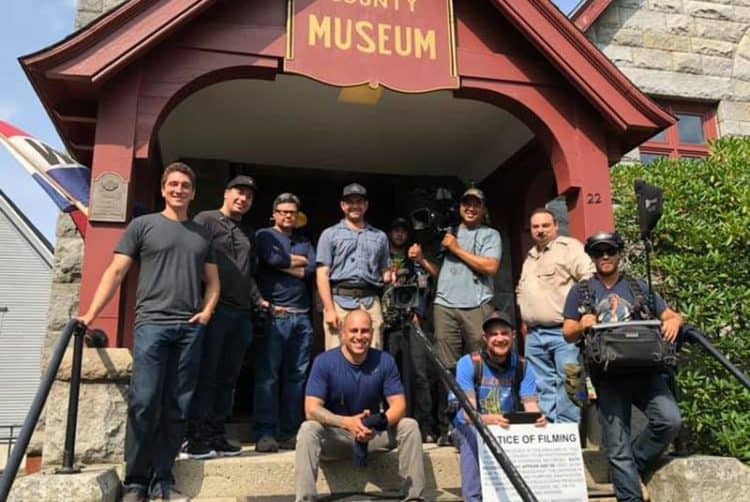
In the summer of 2018, the cast and crew of The Curse of Oak Island arrived in Yarmouth, Nova Scotia, and they travelled in unmarked vehicles to the Yarmouth County Museum & Archives to ask everyone involved with what they were doing to sign non-disclosure agreements so if they discovered anything they would not talk until after the program had aired. The staff of the museum agreed to keep quiet about everything, and when the episode aired on the third of February, six months later, an episode that included the most popular relic the museum had to offer. The Yarmouth Runic Stone.
Nadine Gates, the museum director, stated the show’s historian Terry Deveau took the crew to show them the Overton stone a couple of years before and also mentioned the Yarmouth Runic Stone as well, noting the little discoveries they make on the show, they discover they have to go further in terms of their investigations on the island and its mysteries. The discovery of the stone with inscriptions made them think the ones of the Yarmouth Runic Stone matched. Located west a kilometer from the end of Church Road which is near Yarmouth, the Overtone stone has a cross and a few leaves carved on it, and Oak Island stars Marty and Rick Lagina studied the inscriptions to see if it proved the Portuguese who had connections with the Knights Templar were behind the mysteries of Oak Island.
Discovered in 1812 by Doctor Fletcher on his property at the head of Yarmouth’s harbor, the Yarmouth Runic Stone found itself moved around a bit. Although Fletcher died in 1819, the stone was still located on his former property for sixty years. Sir Daniel Wilson referred to the stone in his work Prehistoric Man, but it wasn’t until Henry Phillips Jr published his paper with the claim the inscriptions on the Yarmouth Stone was Norse in origin the stone acquired its fame.
It was later moved to a local hotel, then it was transported near a local library, and shortly before the First World War, the stone traveled to Oslo, once known as Christianna, for international showing before it traveled to London for a couple of years. It was placed into storage for the duration of the First World War, which makes sense considering the dangers of a ship being sunk by the prowling German U-Boats which would have torpedoed the ship without knowing or caring what was onboard it, and the stone would have been lost. Keeping it locked away in storage made logical sense.
The runic stone was returned to Yarmouth in 1918 after the war had ended before it was moved to its present home in the museum in 1960. The Yarmouth Runic Stone is a slab of quartzite, and the inscriptions have led to some investigators, such as Henry Phillips Jr, have speculated have a Norse origin, which has led to the logical conclusion Yarmouth, and the whole of Nova Scotia in Canada was visited by Viking explorers at some point around the year 1000 C.E. However many people have claimed the stone’s inscriptions are just a hoax, and what’s on the stone is just the result of natural phenomena.
There are many theories relating to the origin of the runic stone. There are also theories about what the 13-character inscription carved on the face of this 400 pound stone says, though as yet nothing concrete has been discovered or proven. Nadine Gates noted the interest of Alex Lagina in the museum and in Yarmouth, since he had never visited the town before, and presented to him a book about Yarmouth’s history, written by Laura Bradley and by Eric Ruff, and she also handed them the souvenir t-shirts saying “I saw the Light” printed on them. Overall the cast of the Curse of Oak Island was at the museum for several hours.
First premiering in 2014 on the 5th of January on the History network in Canada, the Curse of Oak Island is an active and highly popular reality television series following the Lagina brothers as they continue to try to unearth the mysteries of the island by digging up the various artifacts and studying them and piecing together their origins in order to discover the truth of the island while they try to locate the treasure speculated of being buried on the island.
 Follow Us
Follow Us




